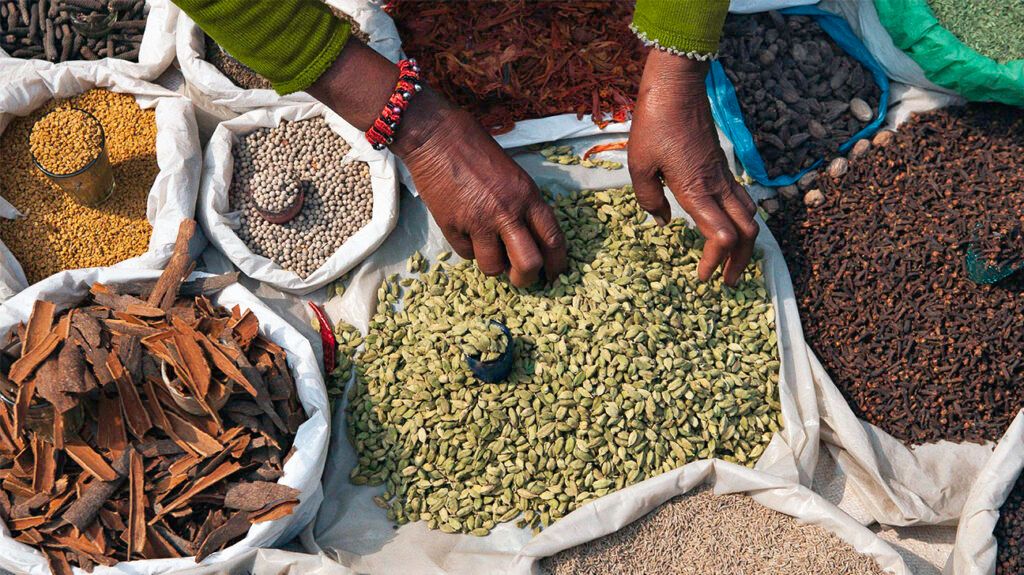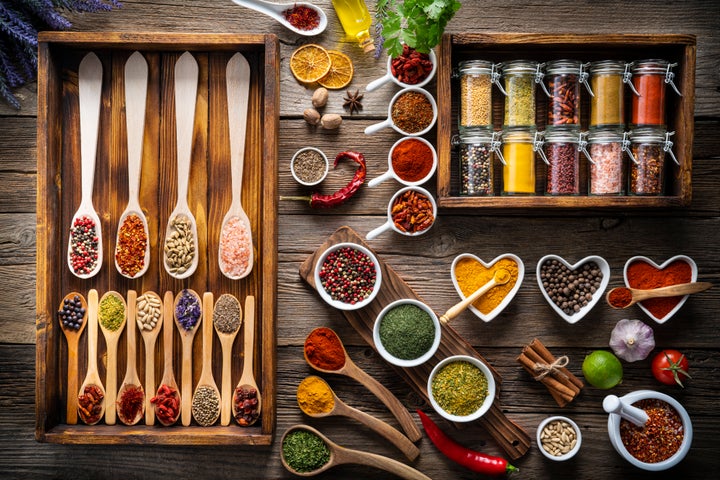
- Scientists researched whether polyphenols found in foods, herbs, and spices in one’s regular diet can affect gut health.
- Polyphenols are compounds found in some plant-based foods that can work as antioxidants in the body and provide protection against some diseases.
- Their findings showed that the polyphenols from herbs and spices may be responsible for an increase in beneficial gut microbes.
Researchers based at the National University of Natural Medicine in Portland, Oregon recently conducted a study on whether polyphenols found in foods, herbs, and spices used in a healthy person’s typical diet could have a positive impact on gut health.
They utilized data from the International Cohort on Lifestyle Determinants of Health (INCLD HealthTrusted Source) to conduct their analysis.
The researchers learned that certain beneficial microbes such as Lactobacillusshowed an increase if participants consumed more polyphenols, and some harmful bacteria were less present in participants with a higher polyphenol intake.
The study appears in the journal Nutrients.
Polyphenols and gut bacteria
As researchers look more into how the gut impacts overall health, studiesTrusted Source show that having a healthy gut microbiome is important due to its role in digestion, immune function, skin health, and much more.
According to the National Institutes of HealthTrusted Source, the “microbiome is the collection of all microbes, such as bacteria, fungi, viruses, and their genes, that naturally live on our bodies and inside us.”
TrillionsTrusted Source of organisms live in the gut, and some things that influence the makeup of one’s gut include the environment they live in, the foods they consume, and the medications they take.
There are both good and bad types of bacteria that live in the gut. Good gut bacteria promote a healthy gut microbiome, and people can improve their good bacteria by eating fermented foods or taking probiotics.
Bad bacteria can occur in the gut, too, including bacteria such as Salmonella, which can make someone sick.
With this in mind, the authors were curious about other ways to boost gut health and took a closer look at polyphenols.
Food sources of polyphenols
PolyphenolsTrusted Source occur in many plant-based foods such as tea, fruit, vegetables, and chocolate and are connected to reduced risk of diseases such as stroke and diabetes.
The authors note that prior studies show polyphenols can be beneficial in helping create a healthy gut but say other studies have not researched whether people can get such benefits from their standard diets.
Using data from the INCLD Health study, the researchers selected a participant pool of 96 healthy adults. To qualify for inclusion, participants needed questionnaires on their eating habits and an rRNA microbiota analysis on file.
The researchers excluded people for some of the following reasons: current use of antibiotics, inflammatory bowel disease, celiac disease, or history of an autoimmune disease.
The majority of the participants were white (around 78%) and female (84.4%). Additionally, 88.5% of participants were non-smokers, and 60% reported minimal alcohol use (from 0 to 3 times per month).
The researchers measured 29 herbs and spices higher in polyphenols but noted that the participants only consistently consumed six. The herbs and spices they focused on were:
- black pepper
- onion
- garlic
- cinnamon
- ginger
- turmeric
Only one of the spices – cinnamon – fell into the category of the highest polyphenol count at equal to or greater than 3,000 mg/kg DW. The most frequently used spice was black pepper, which had a midlevel category polyphenol count of 1,000-1,999 mg/kg DW.
Participants reported higher intakes of garlic and onion, but both were categorized in the lower level of polyphenol counts, less than 1000 mg/kg DW.
The scientists next placed the participants into groups based on their estimated polyphenol exposure through the foods they reported consuming. The groups include low-consumer, medium-consumer, and high-consumer.
More good gut bacteria with higher polyphenol intake
The researchers then analyzed the 16s rRNA microbiota gene sequencing data extracted from microbial DNA from participant stool samples.
According to the researchers, they “first explored potential microbial biomarkers of polyphenol exposure and then used these identified biomarkers in more targeted statistical comparisons.”
After identifying microbial taxa connected to polyphenols, the researchers examined the microbial communities of each polyphenol exposure group to see what connections they could make.
The analysis showed that microbial diversity was consistent amongst all groups regardless of whether the participants were in low or high-consumption groups. However, the researchers did note some differences with specific microbial taxa.
With the bacterium Lactobacillus, they saw a connection between the groups with higher polyphenol intake and an abundance of these good bacteria. Lactobacillus helps prevent intestinal damage.
The scientists also noted a reduction in harmful bacteria in the high-consumption group and noted “opportunistic and pro-inflammatory bacteria are represented in a lower relative abundance.”
“Our results suggest that higher quantities of habitual polyphenol consumption may support an intestinal environment where opportunistic and pathogenic bacteria are represented in a lower relative abundance compared to those with less potentially virulent qualities,” write the authors.
While the scientists need to further research polyphenols consumed in a typical diet, the study findings show that it is possible certain spices and herbs can positively influence the gut microbiome, which can lead to improved health.
More research is warranted
Dr. David D. Clarke, clinical assistant professor of gastroenterology emeritus and assistant director at the Center for Ethics at Oregon Health & Science University, spoke with Medical News Today about the study.
Dr. Clarke noted that the study serves as “preliminary evidence that polyphenols could be beneficial for our health,” but more research is needed.
“In this study, people who consumed larger amounts of polyphenols in their diet had higher levels of beneficial bacteria in their gut and lower levels of more toxic bacteria,” said Dr. Clarke. “However, there are other possible explanations for the findings of the study.”
Dr. Clarke explained there are foods not included in the study that are also rich in polyphenols and could affect the gut such as “coffee, tea, and red wine, all of which have polyphenols.”
Chrissy Arsenault, a registered dietitian with Trainer Academy, also spoke to MNT.
“While more work needs to be done to understand the complex relationship between dietary polyphenols and gut microbiota for human health (since this study was only exploratory and completed on healthy adults), this study found that microbial taxa can differ depending on dietary polyphenol consumption,” commented Arsenault.
While Arsenault acknowledges more research is needed, she noted that this type of research could eventually help inform healthcare professionals on how to best advise their patients.
“While polyphenols to date have been studied for their antioxidative properties, it seems that there is emerging research like this study on gut health that could have implications to how physicians and registered dietitians approach medical nutrition therapy for gut health,” said Arsenault.










